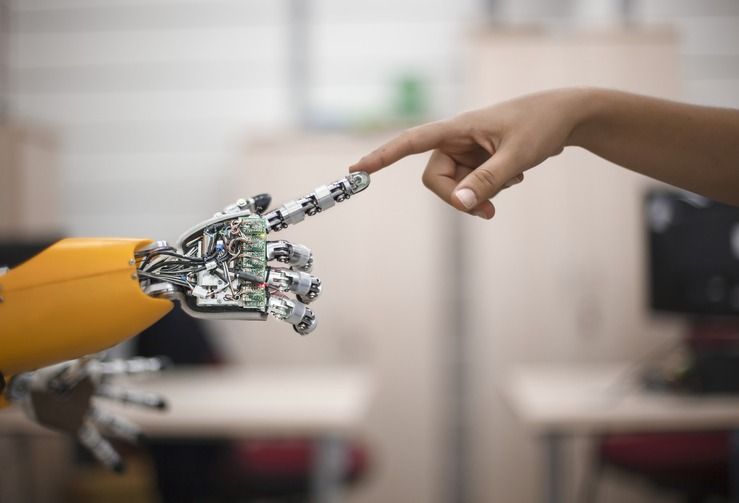British tabloids recently suggested nuclear weapons could trigger killer waves, but science is not on the side of this idea.



A major threat to America has been largely ignored by those who could prevent it. An electromagnetic pulse (EMP) attack could wreak havoc on the nation’s electronic systems-shutting down power grids, sources, and supply mechanisms. An EMP attack on the United States could irreparably cripple the country. It could simultaneously inflict large-scale damage and critically limit our recovery abilities. Congress and the new Administration must recognize the significance of the EMP threat and take the necessary steps to protect against it.
Systems Gone Haywire
An EMP is a high-intensity burst of electromagnetic energy caused by the rapid acceleration of charged particles. In an attack, these particles interact and send electrical systems into chaos in three ways: First, the electromagnetic shock disrupts electronics, such as sensors, communications systems, protective systems, computers, and other similar devices. The second component has a slightly smaller range and is similar in effect to lightning. Although protective measures have long been established for lightning strikes, the potential for damage to critical infrastructure from this component exists because it rapidly follows and compounds the first component. The final component is slower than the previous two, but has a longer duration. It is a pulse that flows through electricity transmission lines-damaging distribution centers and fusing power lines. The combination of the three components can easily cause irreversible damage to many electronic systems.

Project fear? Should we pay attention to American Jesuits?
But the fundamental ambition of transhumanism is more problematic. Its architects champion a use of technology to accelerate the evolution of humanity so radically that at the end of the process humanity as such would disappear. A superior posthuman being would emerge. According to Wikipedia, “Transhumanism is the intellectual and cultural movement that affirms the possibility and desirability of fundamentally improving the human condition through applied reason, especially by developing and making widely available knowledge to eliminate aging and to greatly enhance human intellectual, physical, and psychological capacities.” From its inception, the abolition of human death and aging has been one of the goals of transhumanism as it engineers a new being freed from the biological constraints of the current human condition.
From its inception, the abolition of human death and aging has been one of the goals of transhumanism.
Two of the movement’s philosophers, Max More and David Pearce, have developed eloquent apologies for the transhumanist creed. But they also indicate the movement’s more ominous philosophical themes.
According to our scientists and our colleagues at National Oceanic and Atmospheric Administration (NOAA), Earth’s 2018 global surface temperatures were the fourth warmest since 1880, with warming trends strongest in the Arctic region 🌡️. Stay on top of the trends at: https://go.nasa.gov/2SvsV27

February 4th, 2019 saw the Longevity Leaders Conference hosted in Aldersgate, London. I was fortunate enough to have been invited to attend this interesting event, so I thought that today was the ideal time to share some experiences of the conference with you.
The conference was quite broad in scope and included people from the aging research community, the pharmaceutical industry, general healthcare, and the business and insurance fields.


Circa 2015
The Plasma Acoustic Shield System (PASS) is a crackling, flashing wall of light hanging in the air up to 100 meters away. And while it’s the stuff of sci-fi, the laser-powered PASS already exists in prototype form, built by Stellar Photonics of Redmond, Wash., with funding from the Pentagon’s Joint Nonlethal Weapons Directorate (JNLWD).

Perfectionism often develops in childhood, is impacted by parenting and can lead to mental health struggles in later life. Credit: Shutterstock We recently conducted one of the largest-ever studies on perfectionism. We learned that perfectionism has increased substantially over the past 25 years and that it affects men and women equally.
We also learned that perfectionists become more neurotic and less conscientious as time passes.
Perfectionism involves striving for flawlessness and requiring perfection of oneself and others. Extremely negative reactions to mistakes, harsh self-criticism, nagging doubt about performance abilities and a strong sense that others are critical and demanding also define the trait.

New data predicts an “empty planet.”
But a new book examines the data and comes to a radically different conclusion: instead of continuing to rise, the population will level out in about 30 years — and then start to decline, possibly forever.
Stand on Zanzibar
The book is called “Empty Planet,” and it was written by journalist John Ibbitson and political scientist Darrell Bricker. Their key argument: access to information is changing people’s outlook on reproduction around the world and rapidly shifting the old norms around families and fertility.
“We polled 26 countries asking women how many kids they want, and no matter where you go the answer tends to be around two,” Ibbitson said in a new interview with Wired. “The external forces that used to dictate people having bigger families are disappearing everywhere. And that’s happening fastest in developing countries.”
Meet the gamers who remind us that when everybody plays, we all win. https://xbx.lv/2WvDLoa #GamingForEveryone #SuperBowl #SBLIII